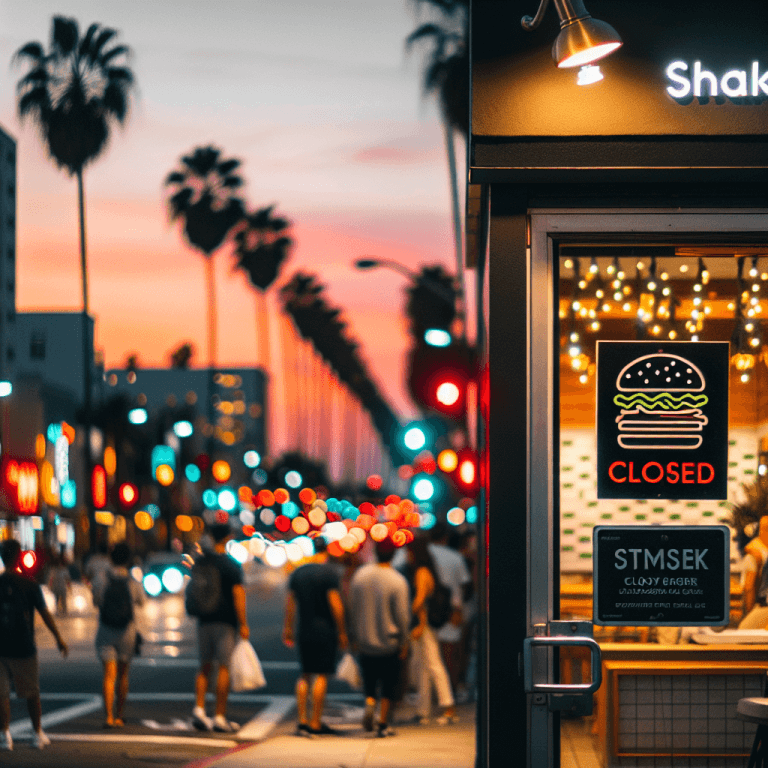Discover 21 NYC Restaurant Closures This Month You Should Know About
In the ever-buzzing culinary landscape of New York City, restaurants come and go with remarkable frequency. Every month, establishments face the harsh reality of closure, leaving behind empty seats and hungry patrons searching for their next favorite meal spot. The current month is no different, with an eye-opening number of 21 restaurants shutting their doors for good. Here’s a detailed look into some of these beloved eateries, what led to their closures, and what this trend might mean for the future of NYC’s vibrant food scene.
The Impact of Rising Costs
The skyrocketing costs in the Big Apple are proving to be a formidable challenge for restaurant owners. Rent, utilities, and supply costs are all contributing to the financial pressures that many establishments find unsustainable.
- Rent Escalations: One of the most cited reasons for closures is the escalating rent in prime city areas. Restaurants operating on narrow profit margins find it difficult to manage when their rent doubles overnight.
- Ingredient Costs: The increasing cost of ingredients also plays a significant role, particularly for those eateries focused on high-quality or specialty items.
- Labor Wages: As living wages rise, so do the operational costs for many of these restaurants.
These financial burdens are heavy, particularly for smaller, independent operations that don’t have deep pockets or extensive financial backing like chain restaurants.
Adaptation Tactics: When Cost-Cutting Isn’t Enough
Many of these shuttered restaurants attempted various cost-cutting measures before they closed. Nevertheless, these efforts were not enough for some.
- Menu Modifications: Restaurants often revamp their menus, offering fewer options or using less expensive ingredients to cut costs.
- Reduced Operating Hours: Cutting down open hours to save on labor and utility costs can work temporarily but is not always a sustainable solution.
- Leaner Staff Structures: While cutting down staff reduces payroll, it can also negatively impact service quality, potentially driving customers away.
Despite these efforts, the unavoidable truth is that the NYC market demands constant innovation and resilience, which can be overwhelming for many restaurateurs.
Shifts in Consumer Spending and Dining Preferences
Alongside rising costs, consumer habits have been evolving. Diners are continually seeking new and unique experiences, often preferring trendy pop-up dining events and food halls over traditional sit-down venues.
The Rise of Food Delivery Services
The convenience of food delivery services is also changing how New Yorkers dine. Apps such as DoorDash, Uber Eats, and Grubhub have made it easier for diners to enjoy restaurant-quality food from the comfort of their homes. This shift in consumer preference impacts foot traffic for local eateries, especially those that have not adapted to offer delivery or takeout services.
The Health Conscious Consumer
There’s also a noticeable shift toward healthier, organic meal options which some traditional restaurants aren’t prepared to accommodate without significant menu overhauls and partnerships with new suppliers, which once again increases operational costs.
Examples of Recently Closed Restaurants in NYC
Each closure tells its own story. Below are a few examples of noteworthy closures to highlight the eclectic mix of restaurants New York is losing:
- Le Grenouille: A French eatery known for its timeless elegance and rich history, struggling to stay afloat in a modernizing city.
- Uncle Boons: This popular Thai spot was a casualty of pandemic pressures, beloved for its innovative take on traditional dishes.
- Gem Spa: A cornerstone of East Village culture, primarily famous for its egg creams, which couldn’t survive the neighborhood’s gentrification.
Each closure represents not just a lost business but a change in community dynamics and culture.
The Future of Dining in New York
While these closures are disheartening, they foster a mindset of creativity and resilience among remaining restauranteurs. To survive, and indeed thrive, in such a competitive environment, restaurants must keep evolving.
Innovation as a Key Driver
The key to endurance lies in innovation. Whether by adopting immersive dining experiences, embracing digital ordering systems, or focusing on sustainability practices, the future of dining in NYC appears to be one of adaptation and flexibility.
Community and Support Networks
Forming alliances and support networks could be instrumental for independent restaurants. Community-supported agriculture (CSA) partnerships and collaboratives among local businesses of different sectors are routes worth exploring to help reduce costs and increase community engagement.
Ultimately, while these closures are a stark reminder of the challenges facing New York’s restaurant industry, they also underscore the importance of resilience and innovation. As the culinary landscape continues to shift, savvy restaurateurs adapting to the entire ecosystem—from costs to consumer preferences—will continue to flourish.
If you’re a restaurant owner looking to strengthen your business infrastructure, or an entrepreneur preparing to launch your very own food enterprise, consider investing in essential services like exhaust maintenance to ensure the health and safety of your establishment. For reliable services, visit New York NY restaurant hood cleaning.





